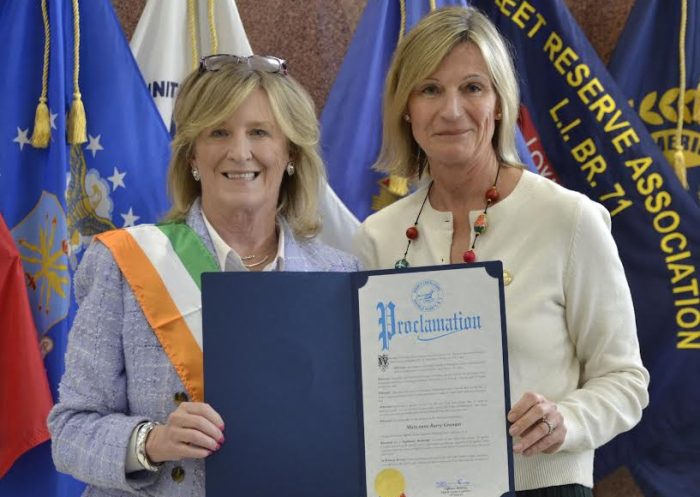By Daniel Dunaief
Evolution doesn’t just favor species that have adaptive advantages in a changing environment. It’s also relevant for businesses, as they move into new markets, and even to scientific publishing.
A preprint scientific publishing effort that started in 2013 at Cold Spring Harbor Laboratory with bioRxiv and expanded in 2019 with medRxiv is making changes that its creators believe positions it to grow while continuing to serve the scientific community.
BioRxiv and medRxiv are becoming an independent nonprofit, called openRxiv. The new format, which takes the preprint offerings outside the home of Cold Spring Harbor Laboratory, will create a product that is outside the realm of a single institution and that has transparent governance.
“We had an independent needs assessment done by a consulting company,” said Dr. John Inglis, Chair of the openRxiv Scientific and Medical Advisory Board. The governance needed to be “more community-oriented, with not just funders, but committees of working scientists.”
The Chan Zuckerberg Initiative, which has been the major funder for the preprint services, understood the benefits of transitioning to an independent non profit. They also wanted to “see a diversification of funding” from other sources and contributors, Inglis said.
Up until co-founders Inglis and Dr. Richard Sever, Chief Science and Strategy Officer at openRxiv created these two preprint services, most biological and medical scientific discoveries progressed through the slower pace of peer review publishing that helps them advance their fields while sharing their results.
Preprints, however, greatly accelerated that process by allowing researchers to display their work before peer review. While scientists might need to amend their findings by adding further studies, these preprints enable researchers to do the equivalent of presenting their research to a worldwide audience, the way scientists do at meetings.
The preprint servers are “like the biggest conference you’ve ever seen, with millions of people,” said Inglis.
A growing market
In each month of the last quarter of 2024, bioRxiv recorded between 8 million and 9.7 million page views, with between 4.7 million and 6.8 million downloads, Inglis said. MedRxiv, meanwhile, had between 1.8 million and 1.9 million page views with a million downloads per month.
With more than 110 new articles per day last year, bioRxiv added 11 percent more original preprints last year. MedRxiv grew by 12 percent, adding 12,863 preprints last year, or about 35 new articles per day.
MedRxiv launched the year before the pandemic and quickly became the major channel of communication for pandemic-related preprints.
In 2020, when pandemic related coverage accounted for 80 percent of everything posted, medRxiv shared a total of 14,070 research pieces.
At this point, contributing authors have come from 190 countries. The most prolific contributors are the United States and the United Kingdom. With readers coming from around the world, openRxiv’s primary task is to convert some of the readers from other countries into contributors, Inglis said.
Search for a CEO
OpenRxiv creates opportunities for several executives.
Sever, who had been CSHL Press Assistant Director, will leave the lab to become the chief scientific and strategy officer for openRxiv.
At the same time, openRxiv, which has an annual budget of $3 million, has hired a recruiting firm to lead the search for its first Chief Executive Officer.
The new CEO will need to “believe in the mission, promise, potential and ambition of openRxiv,” said Inglis, as the CEO will be the “principal ambassador” for the effort.
The new leader will also need experience running a complex organization with various stakeholders and that has community engagement.
Inglis described the current employees, which includes eight full time staff, as “fantastically motivated.” He anticipates the new leader could be announced as soon as three or four months from now.
Expanded opportunities
The preprint servers has appealed to academic institutions directly for ongoing repeated support, through a membership model.
Indeed, preprint managers reached out on the 10th anniversary of bioRxiv and received backing from institutions that are listed on every bioRxiv and medRxiv preprint.
“We want to build on that, to reach out to more institutions,” said Inglis. He wants to have a “real dialog with them about what these servers mean to their faculty and how we can be useful in terms of their operations.”
Some academic institutions don’t always know which research studies are appearing on these servers.
OpenRxiv can give universities information for researchers who are posting their studies.
Additionally, these servers have been offering authors the chance to transfer their manuscripts to particular journals. At this point, openRxiv has connections with 45 publishers who oversee 380 journals.
Inglis said they charge a small fee to set that up and described this effort as the “germ” of a business model. He anticipates that openRxiv could provide more of these connections.
Professional pathways
Authors have the ability to correct or amend their work on these servers. The preprints encourage people to explain the changes, while discouraging too many corrections or changes for grammatical reasons. The record for revisions on bioRxiv or medRxiv is seven.
Inglis has heard from numerous researchers who are grateful to increase the visibility of their work and their careers in a timely way.
These non peer reviewed studies can help scientists move up the ladder, getting job offers from other institutions while they await publication in a journal.
Ongoing support
CSHL, BMJ Group and Yale School of Medicine remain key supporters of openRxiv.
“OpenRxiv is the natural evolution and progression of free and open access to scientific information,” Bruce Stillman, President and CEO of CSHL said in a statement. “BioRxiv and medRxiv have revolutionized the field of science and scientific publishing. The establishment of openRxiv will allow for continued innovation in how the latest scientific results are communicated.”
In the last few weeks, openRxiv had the first in a series of webinars they are mounting on their own behalf. They plan to offer them to institutions across the world and believe they are an effective way to engage with the world of international science.
OpenRxiv is in conversation with faculty at an institution in Japan about organizing a webinar and will reach out to institutions in India. Staff at openRxiv plan to expand the scope of this process by contacting authors in potential locations who have multiple articles on the servers.
The response from students is an “encouragement to do more,” said Inglis. “Having more people and more resources will allow us to ramp up educational development of what we’re doing.”

















